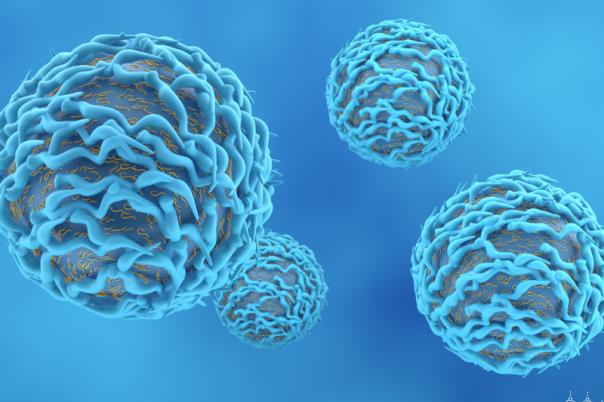Singe cell technologies generate massive amounts of data that have enriched our knowledge and understanding of complex biological processes. More specifically, single-cell data sets can explore gene expression patterns in tissues that can help researchers detect and identify novel biomarkers. Scailyte is an ETH spin-off founded in 2017 that develops AI algorithms to analyse single-cell multi-omics data. Diana Stoycheva, a Principal Scientist at Scailyte, demonstrated how their algorithms can make sense of single-cell data in preclinical settings.
The data generated by single-cell technologies is difficult to interpret, creating a demand for new tools that analyse and interpret this data. Stoycheva introduced ScaiVision, a technology that extracts useful multi-omics single-cell data from the mass of data generated by single-cell technologies. ScaiVision is applied to a discovery cohort of approximately 20 – 40 samples, and the AI algorithm takes advantage of the richness of single-cell data by augmenting the data to learn from just 40 patients. Furthermore, the AI can multiplex and integrate different types of data, including clinical data, proteomics data, cytokine measurements, and genomic data, which can be fed into the model to predict certain endpoints.
Stoycheva explained that when starting a new discovery, it is necessary to have a dataset of patients who have responded to treatment or who have not responded to treatment. Then, 70% of the selected dataset is fed into the AI to train a network on what is a responder or non-responder. The remaining 30% is used to internally validate the initial discovery of the differences between responders and non-responders.
As a result, the model can predict the endpoint responder, non-responder, and whether the disease is treated or not. Stoycheva claimed that their AI is suitable for translating biomarkers into the clinic because of its explainability; she commented: “We can open the model and ask which parameters from the ones that we fit into the system are informing this prediction and this gives us a list of parameters being genes, proteins, a combination of the two clinical data that is informing the prediction of a responder and non-responder.” Unlike traditional methods, ScaiVision maintains single-cell resolution throughout the analysis, avoiding biases from clustering and enabling the discovery of rare cell populations and complex signatures.
ScaiVision has been used in various case studies. For example, it was applied to a CAR T cell therapy use case and improved the stratification of patients by identifying rare populations in CD4 and CD8, achieving 100% sensitivity in predicting toxicity. For skin cancer diagnosis, using CyTOF data, ScaiVision diagnosed CTCL (cutaneous T cell lymphoma) with 98% accuracy, later translated into a 9-cell surface marker panel for clinical use. Scailyte is also building a large multi-omics dataset to enhance precision oncology, focusing on predicting and understanding PD-1 therapy resistance mechanisms.
Finally, Scailyte also collaborated with Queen’s University Belfast to identify genes that contribute to brain metastasis. A PhD student collected pan-cancer cohorts of 200 patients, some with developed brain metastases and some without. Then, they conducted single-cell RNA sequencing, integrated and normalised the data, and fed the data into Scailyte’s AI algorithm. The model identified an 11-gene signature predicting brain metastasis with over 90% accuracy.
ScaiVision’s intelligent approach to biomarker discovery using single-cell multi-omics data and AI has demonstrated its capability in predicting therapy responses and stratifying patients showing high sensitivity and accuracy. In a nutshell, this research marks important progress in precision medicine and therapeutic intervention.




